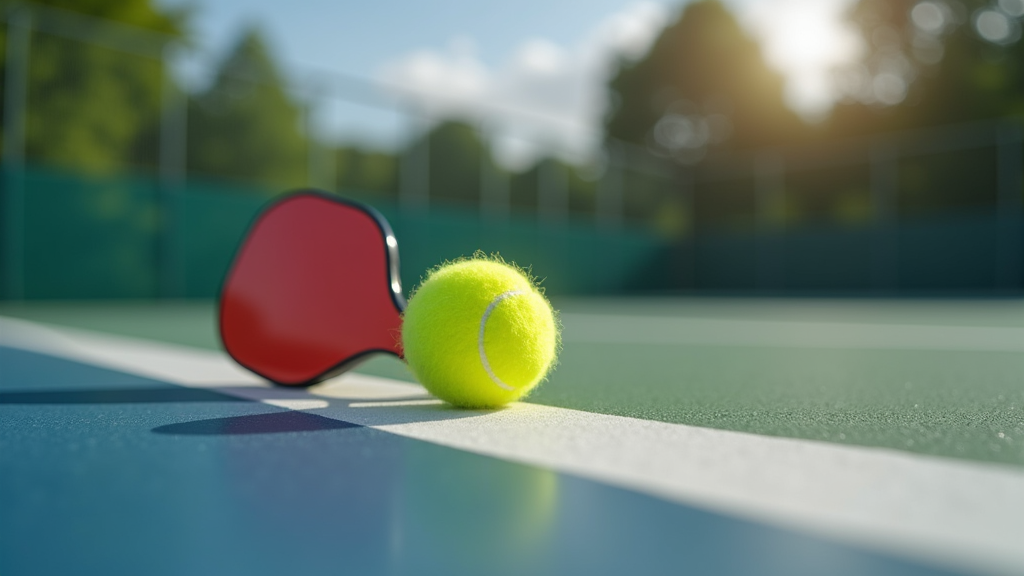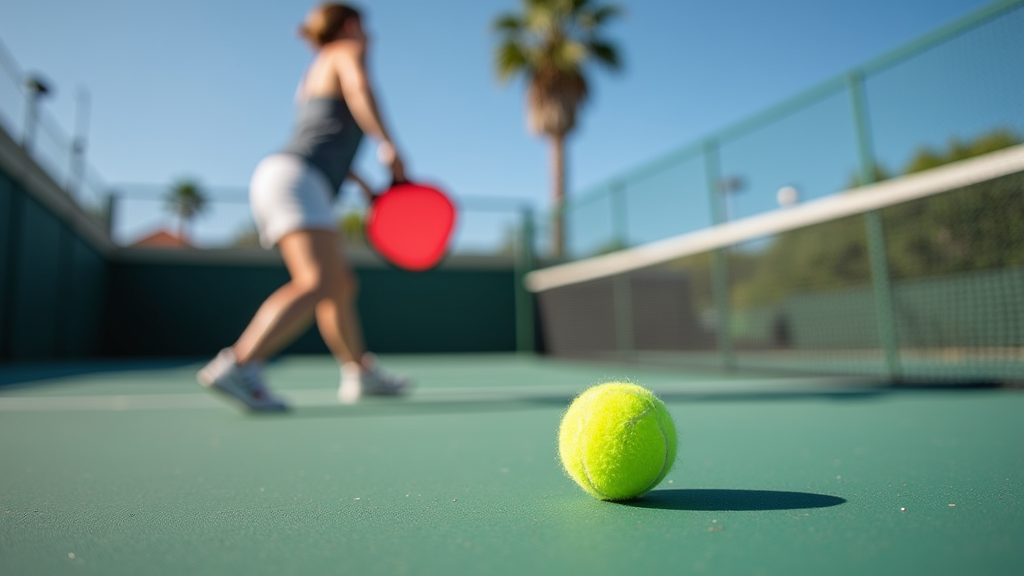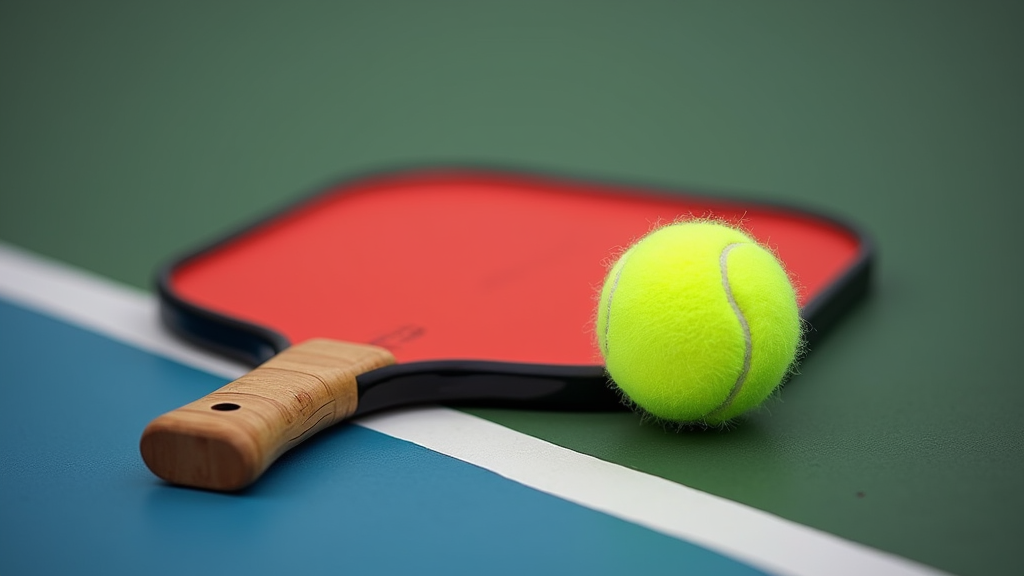Table of Contents
Introduction

Overview and Importance
Pickleball has emerged as one of the most accessible and rapidly growing sports in the United States and beyond. Its simple rules and relatively low physical demands make it appealing to a wide range of ages and fitness levels. With over 4.8 million players in the US alone as of 2022, the sport’s popularity is undeniable. However, to fully enjoy the game and ensure fair play, a solid understanding of the rules is essential.
Knowing the rules of pickleball isn’t just about avoiding penalties; it’s about creating a level playing field for all participants. A clear understanding prevents confusion, minimizes disputes, and allows players to focus on strategy and skill development. Whether you’re a beginner picking up a paddle for the first time or a seasoned player looking to refine your game, mastering the rules is a fundamental step towards a more enjoyable and competitive experience.
Background
The story of pickleball begins in the summer of 1965 on Bainbridge Island, Washington. As the legend goes, Joel Pritchard and Bill Bell, looking for a way to entertain their bored children, cobbled together equipment from around their homes and created a game that combined elements of badminton, tennis, and table tennis. Using a wiffle ball and wooden paddles, they established the basic rules and court dimensions that would eventually evolve into the sport we know today.
While pickleball remained a relatively niche sport for several decades, recent years have witnessed an explosion in popularity. This surge can be attributed to its accessibility, social nature, and the relatively low barrier to entry. The rise of professional pickleball leagues and increased media coverage have further fueled the sport’s growth, attracting new players and solidifying its place in the sporting landscape.
What You’ll Learn
In this guide, we’ll delve into the core concepts of pickleball, providing you with a comprehensive understanding of the rules and regulations. We’ll cover everything from the basics of serving and returning to the intricacies of scoring and the strategic importance of the non-volley zone, often referred to as the “kitchen.”
By the end of this guide, you’ll have the knowledge and confidence to start a game, engage in a rally, and avoid common rule violations. You’ll learn how to properly execute a serve, understand the double-bounce rule, and navigate the complexities of volleying near the kitchen line. Whether you’re aiming to play casually with friends or compete in organized tournaments, this guide will provide you with the foundation you need to succeed on the pickleball court.
Understanding the Basics
Fundamental Concepts
Pickleball, a sport that’s rapidly gaining popularity, blends elements of tennis, badminton, and table tennis. To truly appreciate and excel at the game, it’s essential to grasp some fundamental concepts. Let’s delve into the key definitions that form the bedrock of pickleball.
- Serve:The serve initiates each point. It must be an underhand stroke, contacting the ball below the waist. The server must stand behind the baseline and aim the serve diagonally into the opponent’s service court.
- Return:The return is the act of hitting the ball back over the net after a serve. The receiving team must let the serve bounce once before returning it.
- Volley:A volley is hitting the ball in the air before it bounces. This is not allowed in the non-volley zone, also known as the ‘kitchen’.
- Rally:A rally is the continuous play between the serve and the point ending. It’s the back-and-forth exchange that makes pickleball so engaging.
- Kitchen:The kitchen, or non-volley zone, is the area within 7 feet of the net on both sides. Players cannot volley the ball while standing in this zone.
- Double Bounce Rule:This rule dictates that the ball must bounce once on each side of the net after the serve before volleying is allowed. This helps to extend rallies and adds a unique strategic element to the game.
Beyond the definitions, pickleball is also rooted in core principles that govern how the game is played. Fair play and sportsmanship are paramount. Players are expected to call lines accurately and honestly, and to treat their opponents with respect, regardless of the competition’s intensity. A strong understanding of the scoring system is also crucial. Points are typically scored only by the serving team, and games are usually played to 11 points, win by 2. Knowing these elements ensures a fair and enjoyable experience for everyone involved.
Essential Components
Now, let’s explore the essential components that make up a pickleball game. These elements are the physical tools and settings that allow the game to be played.
- Paddle:The paddle is used to hit the pickleball.
- Pickleball:The ball itself, a perforated plastic ball similar to a wiffle ball, but specifically designed for pickleball.
- Net:The net divides the court in half and dictates the height over which the ball must travel.
- Court:The court is the designated playing area with specific dimensions and zones.
Each of these components has key features that influence gameplay. Let’s examine these features in detail:
- Paddle Material:Paddles come in various materials, each offering different characteristics.
- Pickleball Size:The official pickleball size is approximately 2.874 inches (7.3 cm) in diameter. This size is crucial for consistent bounce and play.
- Net Height:The net’s height is standardized at 36 inches at the sidelines and 34 inches in the middle. This specific height affects shot trajectory and strategy.
- Wood:Wood paddles are generally the most affordable but can be heavier and less responsive than other options.
- Composite:Composite paddles, made from materials like fiberglass or carbon fiber, offer a good balance of power and control.
- Graphite:Graphite paddles are lightweight and provide excellent control and feel, often preferred by more experienced players.
- Court Dimensions:A pickleball court measures 20 feet wide and 44 feet long, the same size as a doubles badminton court. These dimensions dictate player positioning and movement.
- Non-Volley Zone:The non-volley zone, or kitchen, extends 7 feet from the net on each side. This zone restricts volleying, promoting strategic dinking and groundstrokes.
- Indoor vs. Outdoor Pickleballs:Indoor pickleballs are typically softer and have smaller holes, designed for smoother indoor surfaces. Outdoor pickleballs are harder and have larger holes to better withstand wind and rougher surfaces.
- Paddle Weight and Grip Size:Paddle weight and grip size are personal preferences that can significantly impact a player’s control, power, and comfort. Lighter paddles are easier to maneuver, while heavier paddles offer more power. The correct grip size ensures a comfortable and secure hold.
Detailed Guide

Preparation
Before stepping onto the pickleball court, proper preparation is key to ensuring a safe and enjoyable experience. This involves gathering the necessary equipment, setting up the court, and understanding some fundamental considerations.
- Required materials:
- Pickleball paddle: Choose a paddle that feels comfortable in your hand and suits your playing style.
- Pickleball (USAPA approved): Use a USAPA-approved pickleball to ensure consistent play and adherence to official regulations.
- Court with net: Find a designated pickleball court or a suitable flat surface where you can set up a net.
- Comfortable athletic shoes: Wear shoes that provide good support and traction to prevent slips and injuries.
Initial setup involves ensuring the net is at the correct height. The net should be 36 inches high at the sidelines and 34 inches high in the center. Determining the serving side is as simple as a coin toss or any agreed-upon method.
It’s also important to consider a few things before you begin. Warm-up exercises are essential to prevent muscle strains and other injuries. Light cardio, stretching, and some practice swings can make a big difference. Finally, make sure everyone understands the court boundaries. Knowing where you can and can’t step is crucial for fair play and strategic positioning.
Step-by-Step Process
Pickleball may seem complex at first, but it’s easy to grasp once you understand the basic steps and rules. Here’s a clear breakdown of the gameplay process:
- Clear instructions:
- Serving: The serve must be underhand, made below the waist, and directed diagonally into the opponent’s service court.
- Return of Serve: The receiving team must allow the serve to bounce once before returning it. This is part of the double-bounce rule.
- Double Bounce Rule: After the serve, both the receiving team and the serving team must let the ball bounce once before volleying (hitting it in the air).
- Rally: Once the double bounce rule is satisfied, players can volley the ball back and forth until one team faults.
- Scoring: Only the serving team can score points. A point is awarded when the receiving team commits a fault, such as hitting the ball out of bounds or failing to return it properly.
- Kitchen Rule: The “kitchen” is the 7-foot non-volley zone near the net. Players cannot volley the ball while standing within this zone.
To improve your game and play effectively, consider these best practices. Aim for deep serves to push your opponents back. Communicate clearly with your partner to coordinate your movements and strategy. Always be aware of your position on the court and anticipate your opponent’s next move.
Avoid these common mistakes. Serving overhand is a frequent error for beginners. Remember, the serve must be underhand and below the waist. Volleying in the kitchen is another common mistake that results in a fault. Finally, ensure you and your partner always let the ball bounce once on the serve and return before volleying to adhere to the double bounce rule.
Advanced Techniques
Once you’ve mastered the basics, you can take your pickleball game to the next level with advanced techniques and strategies. These tips can help you gain a competitive edge and play with more finesse.
- Expert tips:
- Dinking: This involves hitting soft, controlled shots that land in the kitchen, forcing your opponents to approach the net and potentially opening up opportunities for attack.
- Blocking hard shots at the net: Develop the ability to quickly react and block powerful shots aimed at you while maintaining your position at the net.
- Strategic serving to weak spots: Identify your opponent’s weaknesses and target your serves accordingly to exploit their vulnerabilities.
Optimize your game through consistent practice and focused improvement. Work on improving your paddle control for more precise shots. Develop a consistent and reliable serve to start each point strong. Master court positioning to maximize your coverage and anticipate your opponent’s moves.
Even experienced players face challenges. If you’re unsure of a call, calmly discuss it with your opponent or consult an official if available. When facing difficult opponents, adjust your strategy and focus on exploiting their weaknesses. Playing in different weather conditions requires adapting your game; for example, wind can affect the ball’s trajectory, so adjust your shots accordingly.



